Many countries are back in lockdown as the world attempts to flatten COVID-19’s latest surge. When lockdown first became reality back in March/April, email marketers had to adjust their strategies overnight to address a very different set of needs. Recognising “Those who fail to learn from history are destined to repeat it”, I’ve summarised the best practices we saw back then.
Which still hold true, and which may need adapting for slightly different circumstances?
Data Quality: Many brands will need to email all their customers about changes in trading hours, delivery times, etc. The risk in this is mailing to dormant addresses, During the first wave of lockdown messaging, we saw a 5X increase in spam trap hits, which negatively impacts sender reputation and makes delivery more difficult. Senders should use this opportunity to suppress dormant email addresses, re-qualify inactive addresses, and validate new addresses.
Timing: Most subscribers are now working from home, so there’s no need to target them early or late in the day while they are commuting. In the first lockdown, we actually saw higher levels of engagement in the afternoon and on weekends, so consider shifting sends to after midday and during non-traditional working hours. Also offset sends to before and after top of the hour: 70% of marketing email volume is sent during the first 10 minutes of the hour, so avoiding this peak will help improve delivery.
I gathered these particular insights from our regular State of Email Live webinars in which we analysed data during lockdown and the ensuing months, and we’ve recently compiled these findings into an easy-to-reference ebook. I strongly encourage you to review the data as we approach yet another lockdown, as we’ll likely see similar email behavior again.
Content: During this period, it’s not just about promotions – customers are looking for important information as well. Pandora Jewellery provides a great illustration highlighting other channels that can be used, explaining their extended exchange/return policy, and providing a range of customer service details.
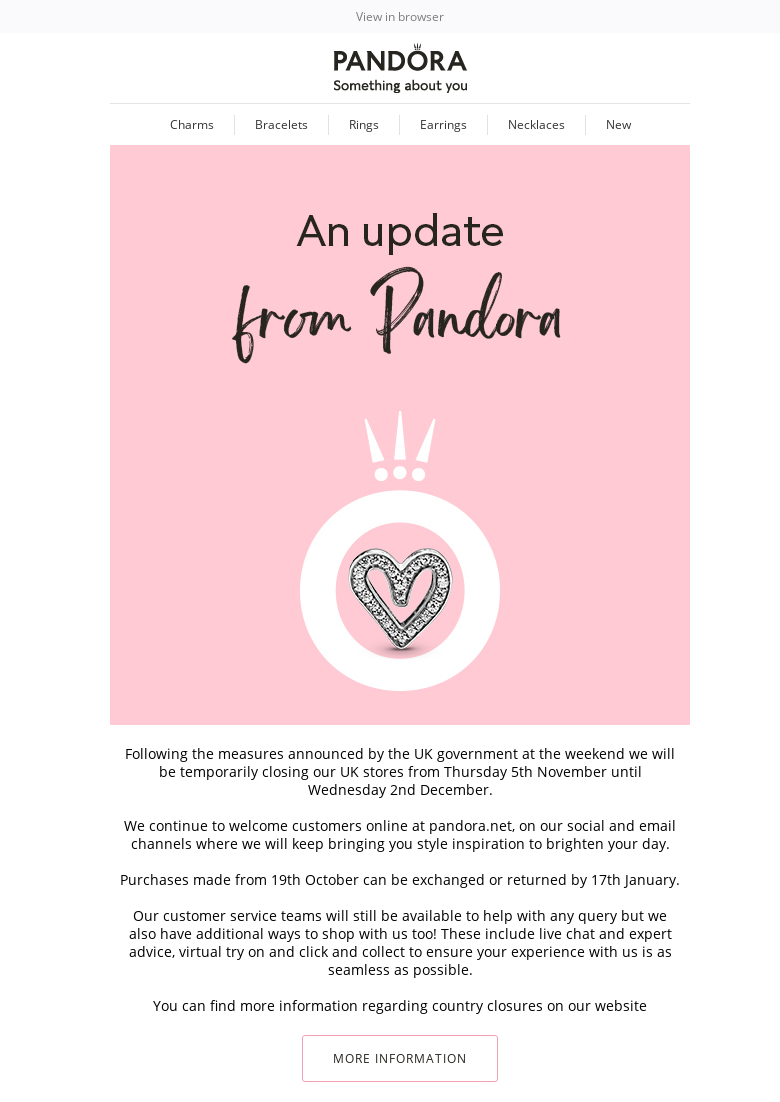
Of course, some businesses can’t sell at all right now. Center Parcs France makes this point but explains they would like to maintain a relationship with customers, and subscribers are encouraged to follow a range of developments taking place while the resorts are closed.
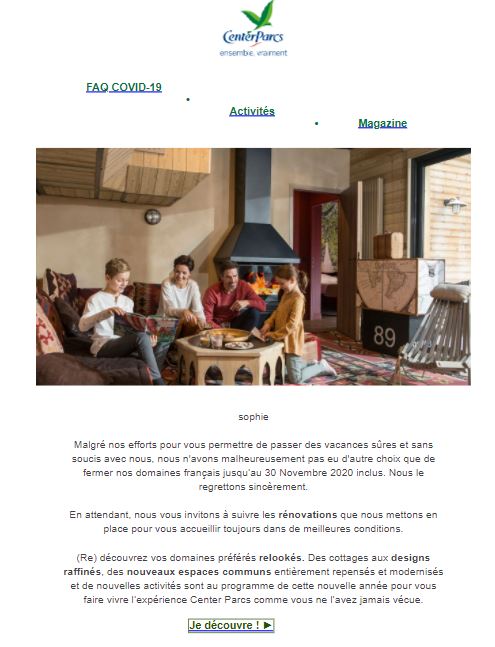
Triggered Emails: Remember your triggered emails may contain messages that were relevant during normal times, but are not appropriate now in lockdown. For example, a French sender is welcoming new subscribers with,“We look forward to seeing you in one of our stores soon”, which won’t be possible while they are shut!
Augmented Reality: Brands realised if customers could no longer visit their shops, they would need to bring shopping experiences to their customers’ inboxes instead. We saw great examples from Ray-Ban (try on a virtual pair of sunglasses) and MAC cosmetics (test the perfect shade of lipstick).
As we begin lockdown 2.0 these points all apply, but there are subtle variances. Consumers now have some experience on what to expect, but this is a different season—shorter days, colder weather— and Christmas is approaching. These factors mean tweaks will be required.
Peak-sale Fatigue: The peak-sale period started earlier this year, with Amazon Prime day moving to mid-October, followed by Singles Day and Click Frenzy in November. Subscriber fatigue is a real threat, and some senders are adapting promotions to extend events normally based on one day to a week (Lookfantastic) or even a month (The Body Shop). This reduces pressure on customers and maintains offer relevancy, rather than expiring after 24 hours (meaning less complaints from subscribers who find them too late!).
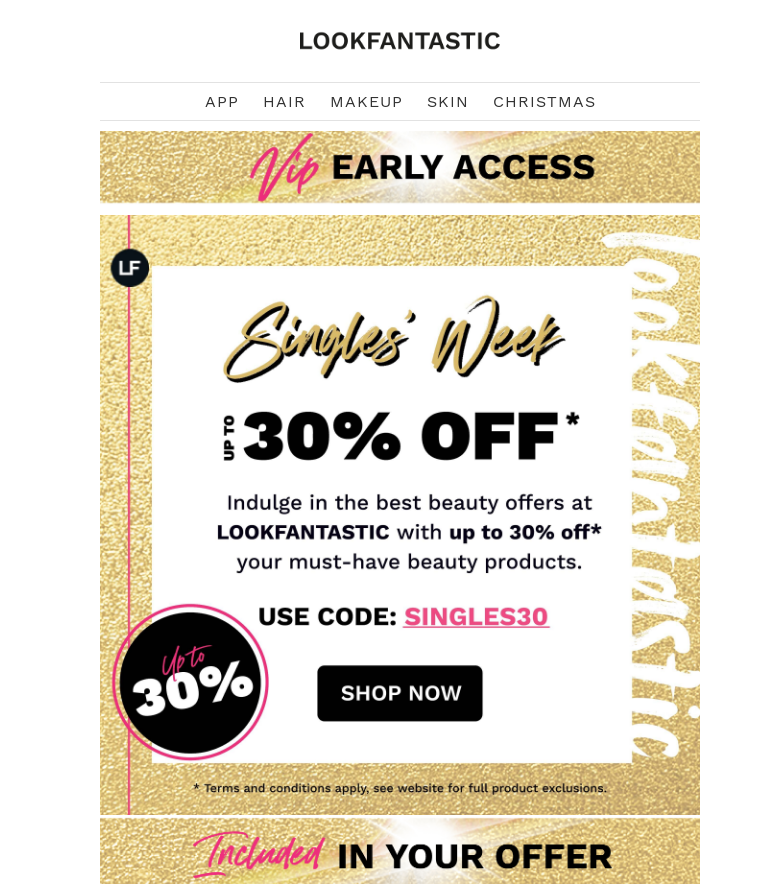
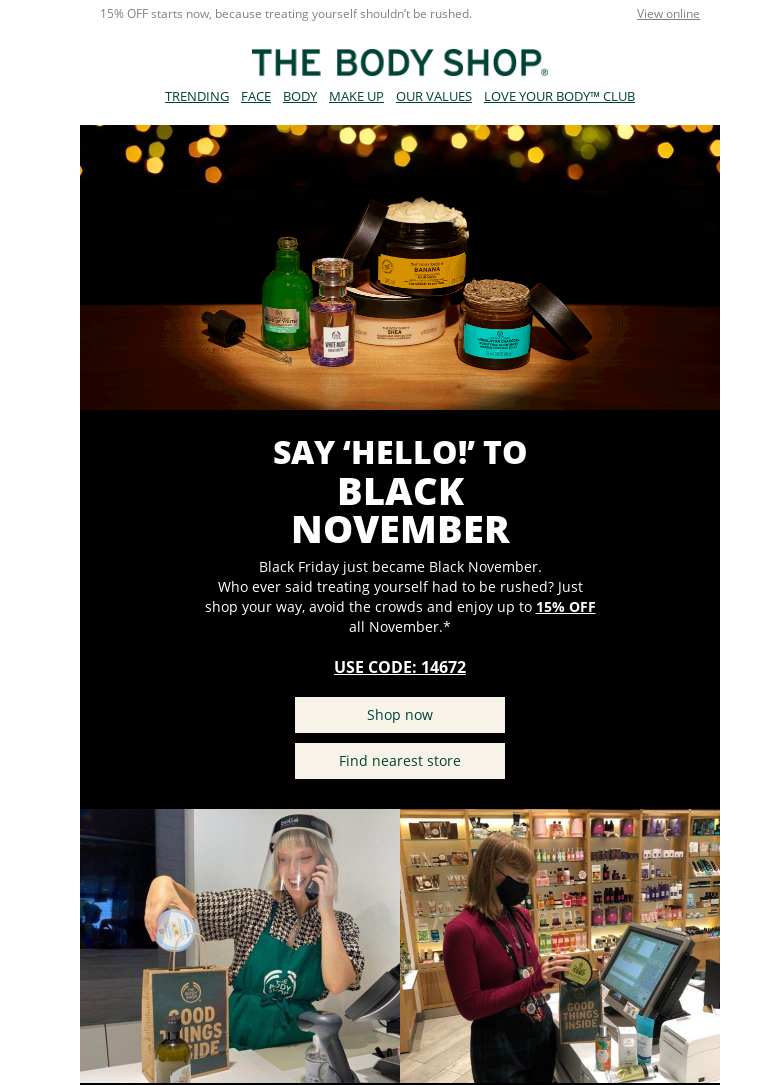
Smart senders also provide functionality like “remind me later” and “take a snooze”, allowing subscribers to engage on their terms, reducing potential list churn as an added benefit.
Early Starters: Consumers are starting Christmas shopping earlier this year. Inventory issues and consumer uncertainty means they don’t want to risk products being unavailable, or extended delivery times, meaning purchases won’t arrive by when they’re needed. Senders can provide customers with wish lists of the products they are most interested in, and opt-in to replenishment notifications for items temporarily out of stock. These message types are high-value, too, generating average revenues of £0.39 and £0.43 per email (according to research from Bluecore).
Tone of Voice: The first time around, we saw the importance of empathy, demonstrating “we’re all in this together”. Ten months later, it’s a tougher period in many ways. It’s getting cold and dark, many people won’t spend Christmas with their families, and fragile mental health, at a national level, is a very real problem. Helping people deal with these challenges will be vital, and we are already seeing an evolution from empathy from brand to consumer, to “be kind to everyone,” as this great example from Burger King showcases:
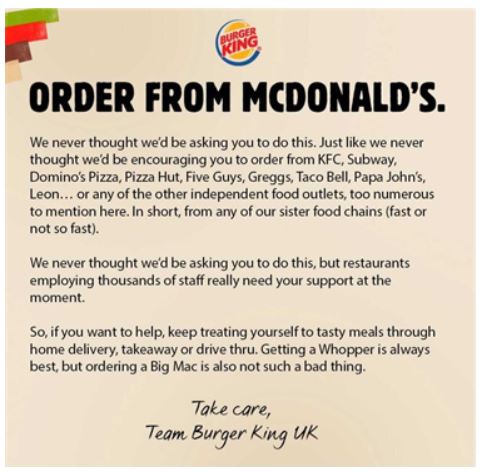
While this is a tough period, senders can use it as an opportunity to build trust through being good actors. By doing so, they will build durable customer relationships that will outlast the pandemic and yield permanent benefits through reduced list churn and increased customer lifetime value.